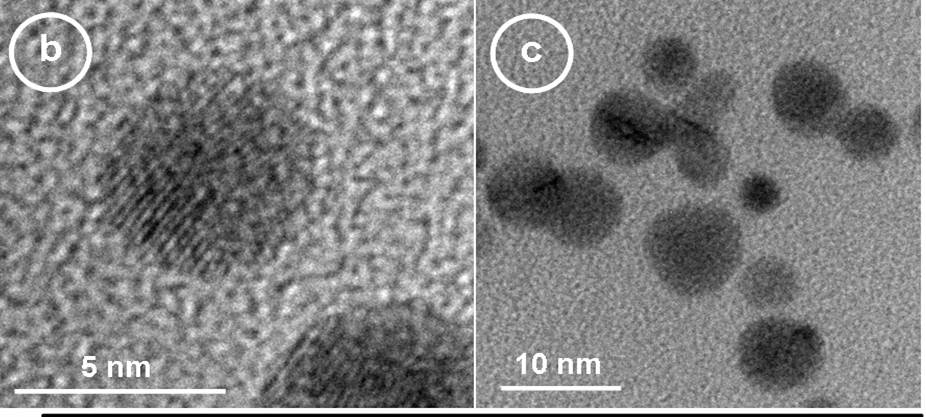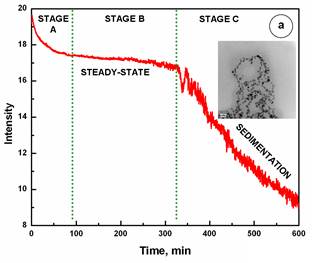6. Resonance Elastic Light Scattering and Plasmonic Phenomena in Glutathione-Mediated Gold Nanoparticle Assembly
Publication: Amanda Prance, Zachary Reed, Magdalena Stobiecka, and Maria Hepel, "Resonance Elastic Light Scattering and Plasmonic Phenomena in Glutathione-Mediated Gold Nanoparticle Assembly", in: Sensors, Actuators, and Microsystems, G. Hunter [Ed.], ECS Transactions 28 (2010) 43-57.
The interactions of biomolecules with multifunctional gold nanoparticles (AuNP) are important in view of novel biomedical applications of nanoparticles for diagnostic and therapeutic purposes. In this work, the interactions of a tripeptide glutathione (GSH) with AuNP have been investigated using resonance elastic light scattering (RELS), UV-Vis plasmonic spectroscopy, and high-resolution TEM imaging. Strong dependence of scattering cross-section on GSH concentration has been found for small AuNP (5 nm dia.) with a dramatic 9-fold increase in RELS intensity as illustrated in Figure 1. This increase has been ascribed to the formation of GSH-linkages between citrate-capped gold nanoparticles, leading to the gold nanoparticle assembly. This process is virtually instantaneous (in the timeframe of less than 1 min) and is followed by a slow ligand exchange process completed within 1 hour and manifested by light scattering decrease. In long term (10 hours) monitoring of GSH-AuNP interactions by RELS, the time-resolved ligand exchange, steady-state, and assembly-sedimentation stages in GSH-linked AuNP network formation have been found. Similar effects were also observed for oxidized glutathione (GSSG). This is illustrated in Figure 2 for AuNP5nm particles and CGSSG = 5 mM. The effect of ligand exchange between citrate and GSH on the surface plasmon (SP) absorbance has been analyzed and has shown SP band broadening and bathochromic shift, consistent with the GSH-induced AuNP assembly. This corroborates the RELS measurements and resluts of HR-TEM imaging. An unusual dependence of SP absorbance maximum on GSH concentration has been observed and is discussed in detail. The results of molecular dynamics and quantum mechanical calculations corroborate the mechanism of the formation of hydrogen-bonded GSH-linkages and interparticle interactions and show that multiple H-bonding between GSH-capped AuNP can occur in the zwitterionic pH window (pH = 2.04 to 3.53) leading to the GSH-induced AuNP assembly. These interparticle interactions become so strong for larger AuNP (22 nm dia.) that the RELS intensity decreases immediately upon the injection of GSH due to the extensive assembly-sedimentation process. The applications of GSH-linked gold nanoparticle networks for preparation of sensory films on electrodes are discussed in detail.

Figure 1. Left panel: High-resolution TEM image of AuNP; atomic rows with distance 0.24 nm are seen. Right panel: HR-TEM image of small GSH-linked AuNP assemblies.

Figure 2. Temporal evolution of RELS intensity at λ = 640 nm for a 2.5 nM AuNP(5nm) nanoparticle solution after injection of 5 mM GSSG.